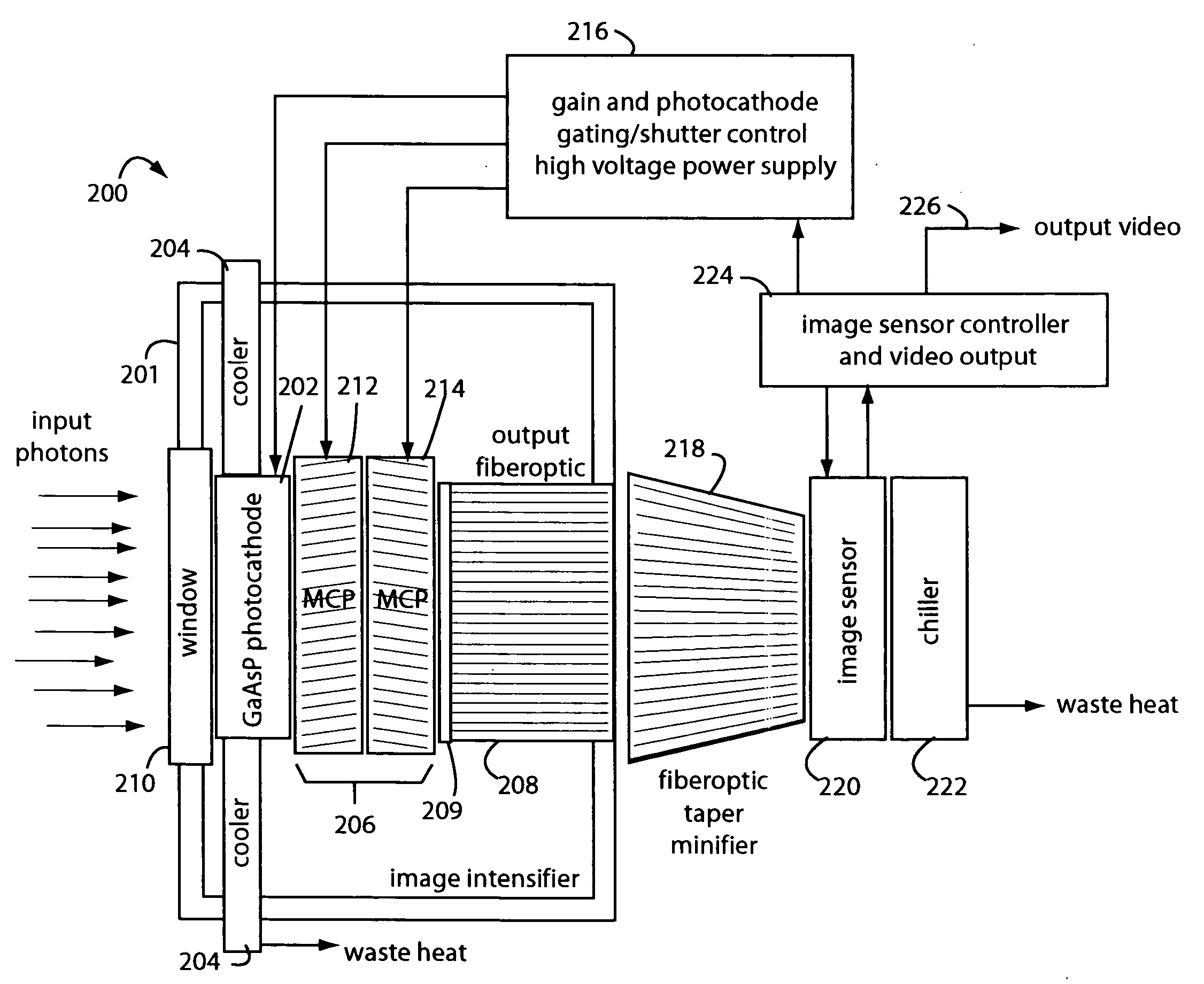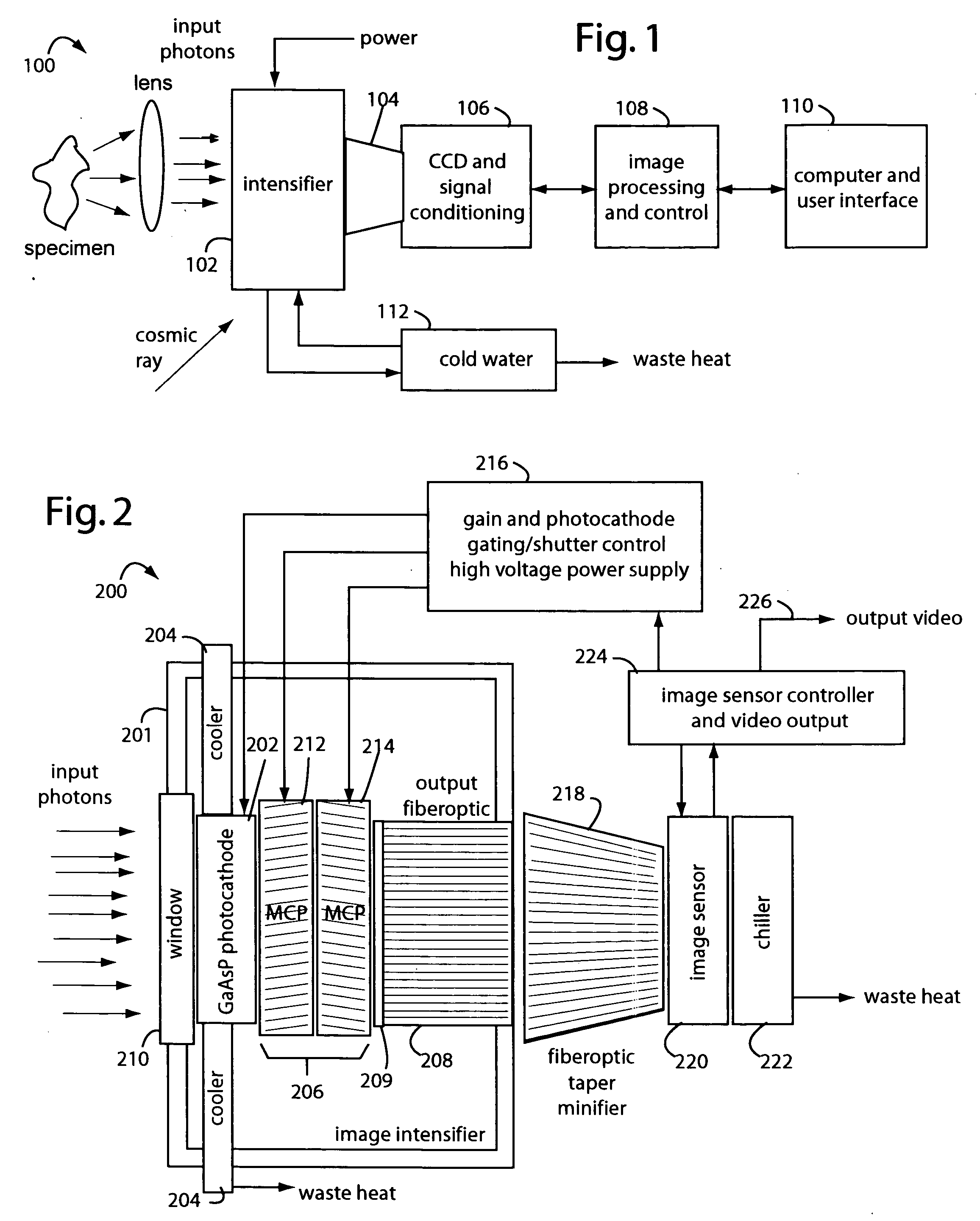Low-photon flux image-intensified electronic camera
a technology of low-pass filter and electronic camera, which is applied in the field of low-pass filter image-intensified electronic camera, can solve the problems of long imaging time, low light level of such tissues can be electronically obscured, and two cannot be simultaneously shuttered, so as to achieve low noise, reduce background, and achieve high gain
- Summary
- Abstract
- Description
- Claims
- Application Information
AI Technical Summary
Benefits of technology
Problems solved by technology
Method used
Image
Examples
Embodiment Construction
[0027]FIG. 1 represents an intensified camera system embodiment of the present invention, and is referred to herein by the general reference numeral 100. The intensified camera system 100 collects bioluminescent light photons through a lens from a specimen on an image intensifier 102. Such can be used for separately imaging and then combining reference photos of the specimens and their exceedingly faint bioluminescent emissions. A tapered fiberoptic coupling 104 collects an intensified image produced on the backside of the image intensifier 102 and relays it to a CCD camera 106. An electronic rendering of the photon image is received by an image processor 108 that can make long exposures by digitally integrating frames. Results are sent to a computer and user display 110.
[0028] The CCD camera 106 must be a very high quality or scientific-grade device so the image intensifier 102 can be set at lower gain values. Cooling the CCD camera 106 will improve results too by elimination of s...
PUM
 Login to View More
Login to View More Abstract
Description
Claims
Application Information
 Login to View More
Login to View More - R&D
- Intellectual Property
- Life Sciences
- Materials
- Tech Scout
- Unparalleled Data Quality
- Higher Quality Content
- 60% Fewer Hallucinations
Browse by: Latest US Patents, China's latest patents, Technical Efficacy Thesaurus, Application Domain, Technology Topic, Popular Technical Reports.
© 2025 PatSnap. All rights reserved.Legal|Privacy policy|Modern Slavery Act Transparency Statement|Sitemap|About US| Contact US: help@patsnap.com


